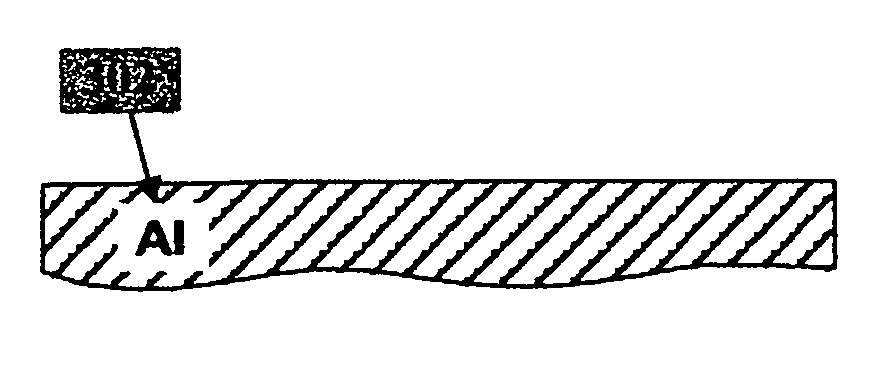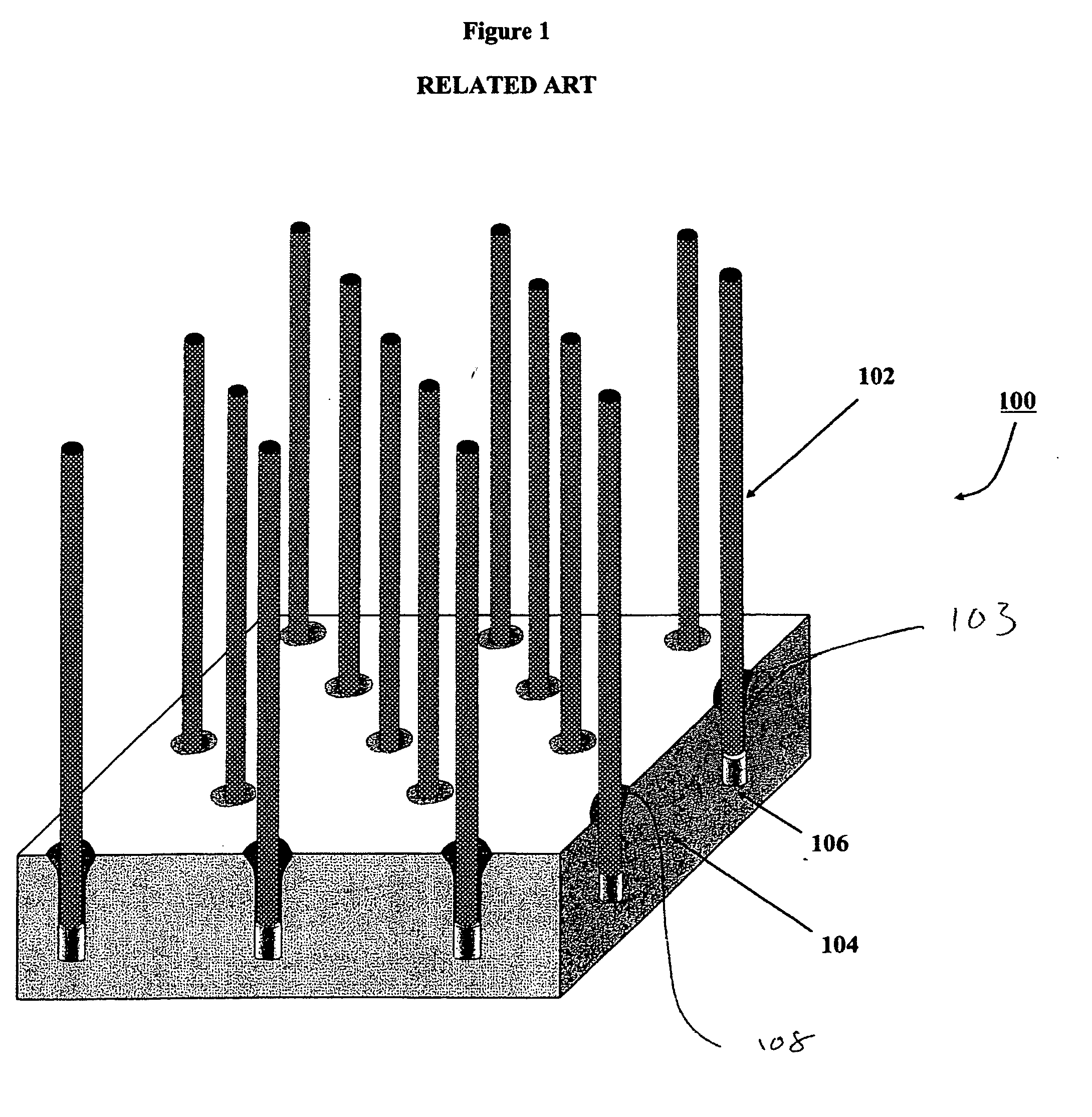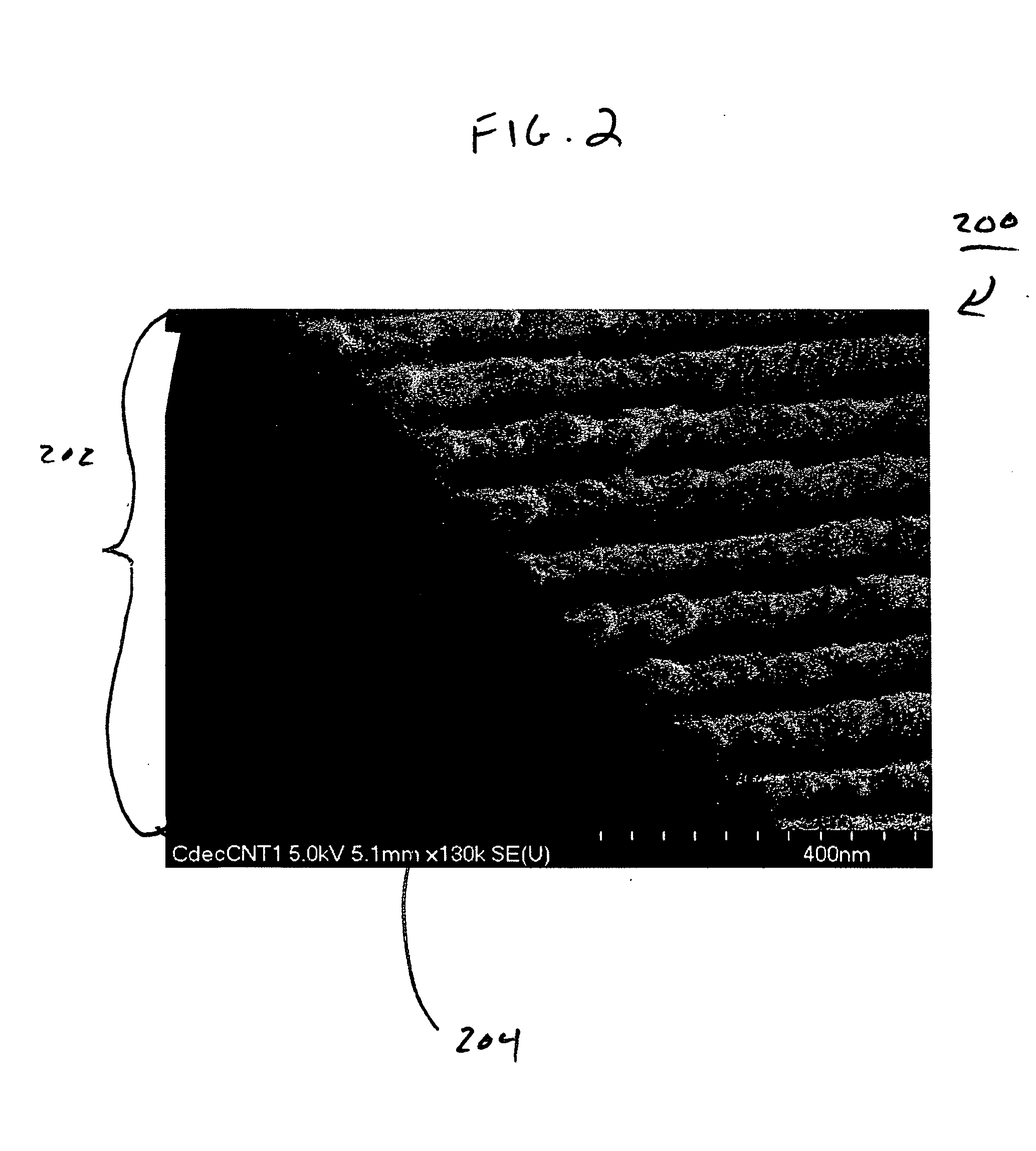Method for fabrication of porous metal templates and growth of carbon nanotubes and utilization thereof
a technology of carbon nanotubes and templates, which is applied in the direction of carbonsing rags, cell components, coatings, etc., can solve the problems of large number of processing steps and complex implementation on a large scal
- Summary
- Abstract
- Description
- Claims
- Application Information
AI Technical Summary
Benefits of technology
Problems solved by technology
Method used
Image
Examples
Embodiment Construction
[0037] The invention relates to a method and apparatus for growing of carbon nanotubes (CNTs) on transition metal catalysts by chemical vapor deposition (CVD) conducted via refined anodic aluminum oxide (AAO) templates. Optionally, the templates may be formed from aluminum layers on substrates, such as, for example, plastic, semiconductor, metal, and combinations thereof. The invention produces dense, solid, continuous, and long CNTs. These CNTs may be used for number applications including hydrogen storage, quantum wires, molecular filtration, catalytic applications, and as a monolithic bulk structural material.
[0038] More specifically, a smooth carbon nanotube structure prepared according to the invention showed a diameter that was larger than the pores of the AAO template. For example, it exhibited a rope like shape. It is thought that these structures are a convergence of a plurality of CNTs grown out of the pores and / or from the surface of the AAO template.
[0039] It is genera...
PUM
| Property | Measurement | Unit |
|---|---|---|
| pore diameter | aaaaa | aaaaa |
| interpore center-to-center distance | aaaaa | aaaaa |
| temperature | aaaaa | aaaaa |
Abstract
Description
Claims
Application Information
 Login to View More
Login to View More - R&D
- Intellectual Property
- Life Sciences
- Materials
- Tech Scout
- Unparalleled Data Quality
- Higher Quality Content
- 60% Fewer Hallucinations
Browse by: Latest US Patents, China's latest patents, Technical Efficacy Thesaurus, Application Domain, Technology Topic, Popular Technical Reports.
© 2025 PatSnap. All rights reserved.Legal|Privacy policy|Modern Slavery Act Transparency Statement|Sitemap|About US| Contact US: help@patsnap.com



